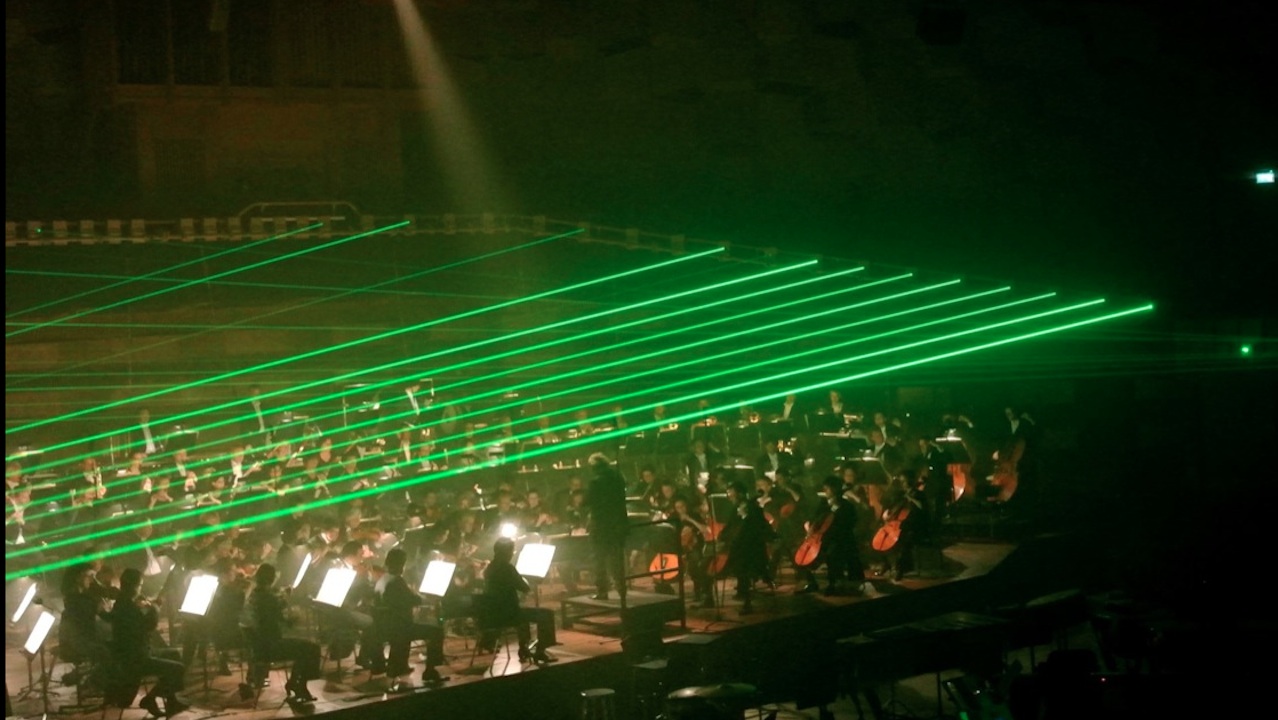During the famously riotous 1913 debut performance of the Rite of Spring, the crowd clamored as much over Vaslav Nijinsky’s physical, erratic choreography as they did over Igor Stravinsky’s thunderous score. It’s something that’s lost in contemporary performances of the Rite: the work is often performed in symphony halls, without dancers, and when the ballet is staged it inevitably differs from Nijinsky’s vision. Contemporary choreographers have attempted to reconstruct the Rite from photos, primary-source writeups, and sketches, but no complete documentation of the dance exists, a century after its premiere.
This year, to commemorate that centennial anniversary, the North Netherlands Symphony Orchestra commissioned the design studio Arcade to create a multimedia installation that would accompany a performance. The group–James Alliban, Keiichi Matsuda and William Coleman–installed 50 lasers in the concert hall, each of which responds to the volume of a particular instrument. It’s not a dance, per se, but the rhythmic, musically responsive light show does add a welcome visual accompaniment.
Watch a sample of the performance, presented in black and white, somewhat unfortunately (those green lasers look cool!) above. Creative Applications explains how it was put together.
This installation consists of 50 custom devices that include 20mW laser modules connected to piezos via custom housed PCBs (designed by Neil Mendoza) and programmed using the Arduino IDE. The Piezos were attached to selected instruments with specially designed putty to pick up the audio vibrations. The resulting signal was picked up by their PCBs (placed beneath the musician’s seat), processed and used to control the lasers positioned on the balcony.



